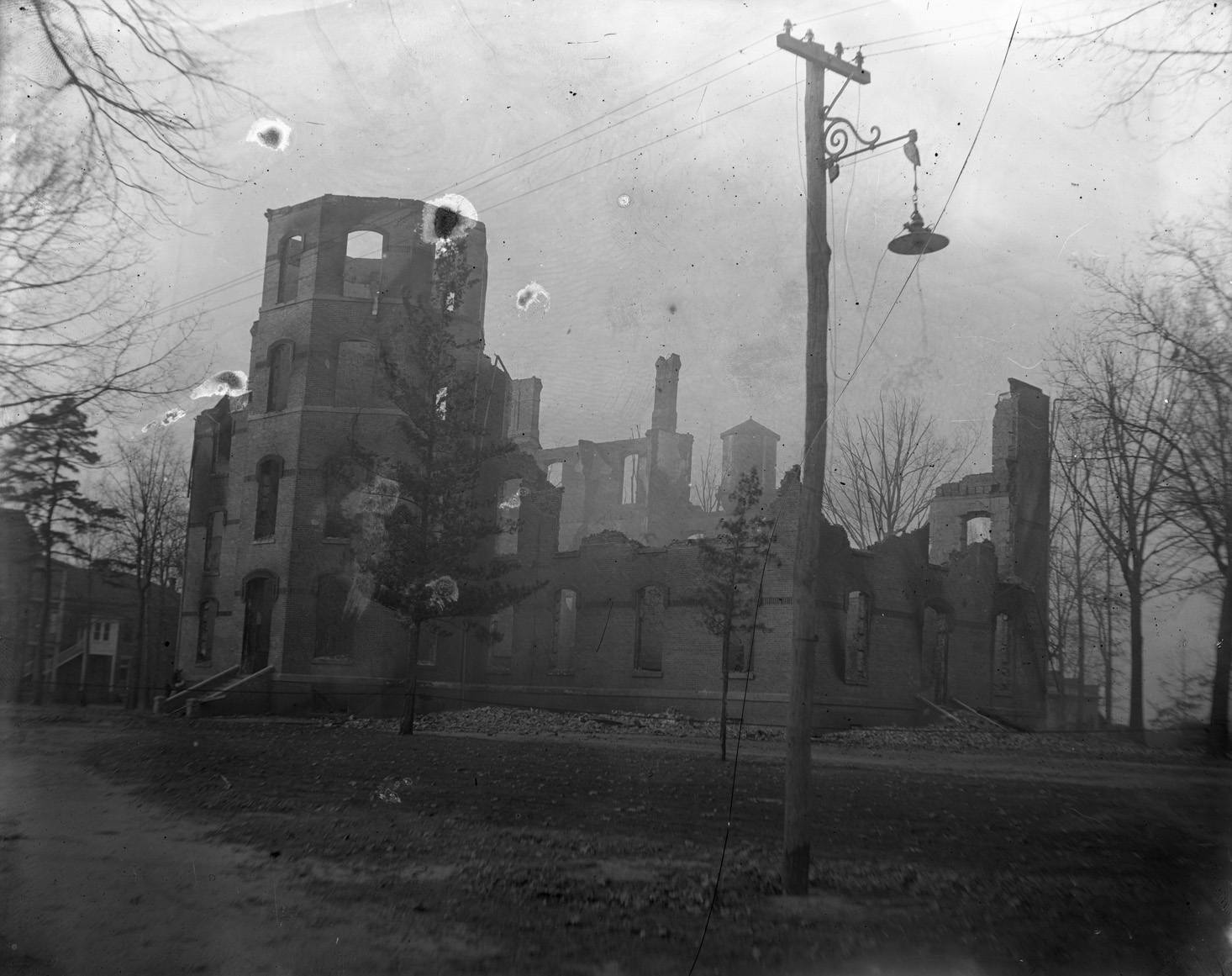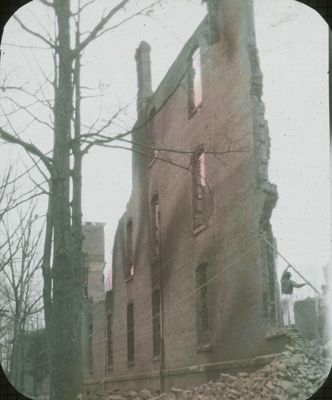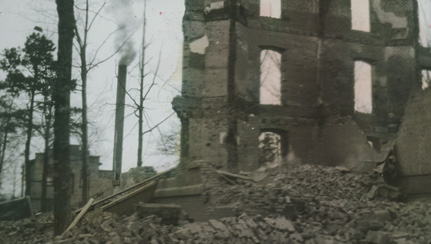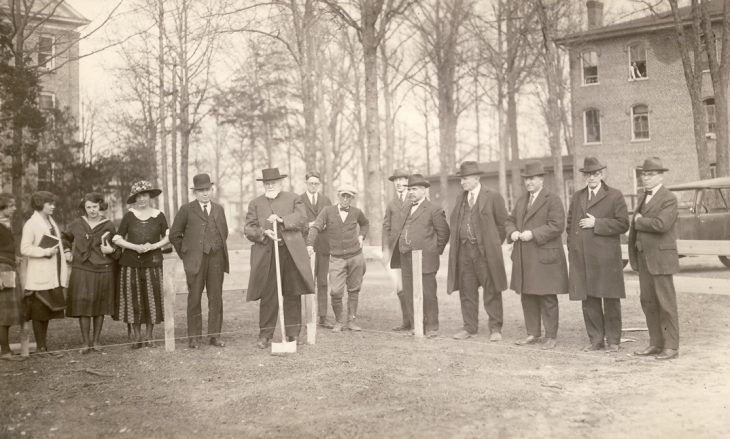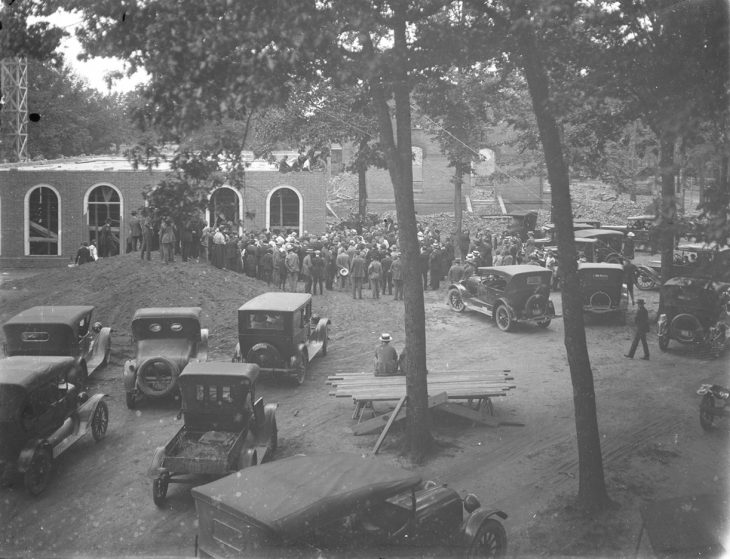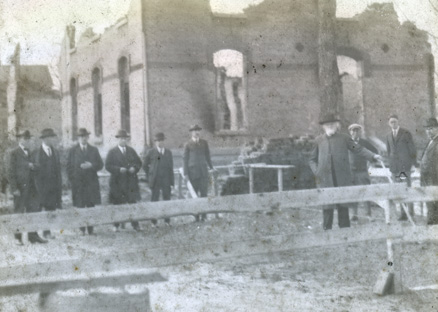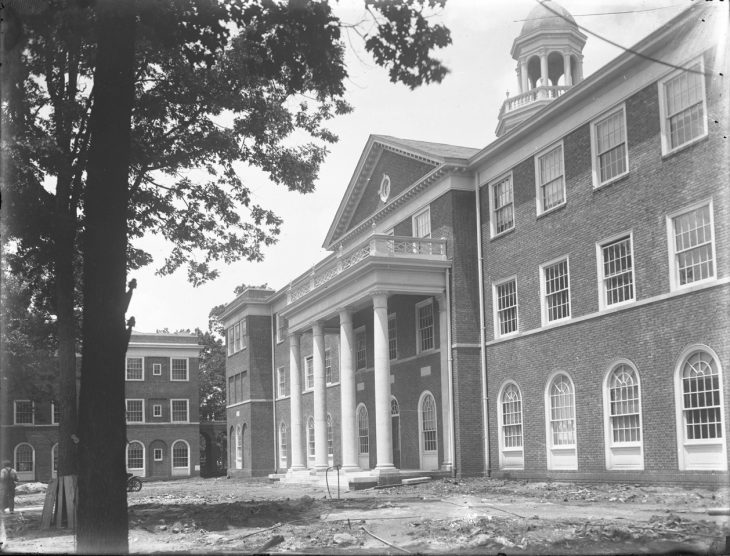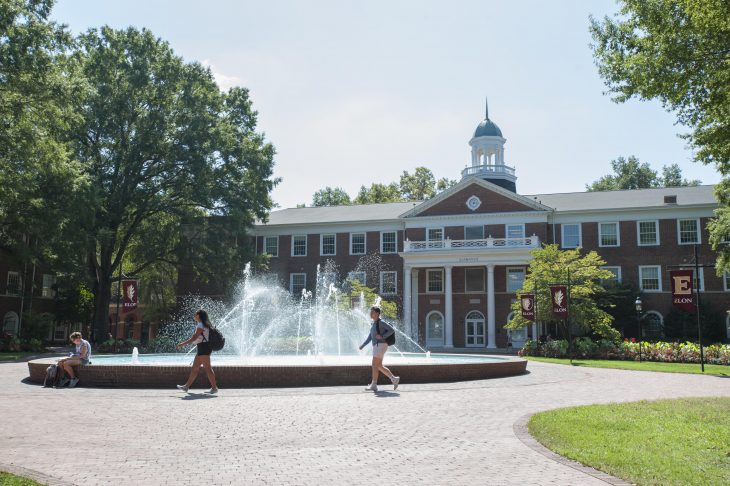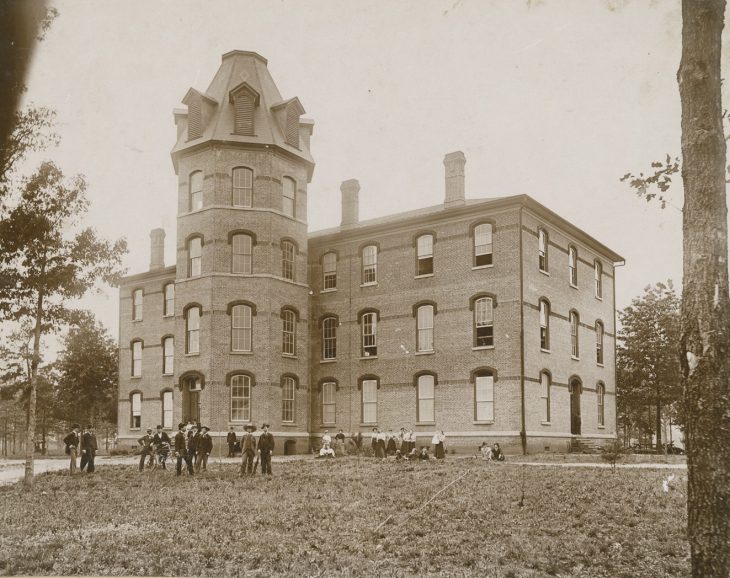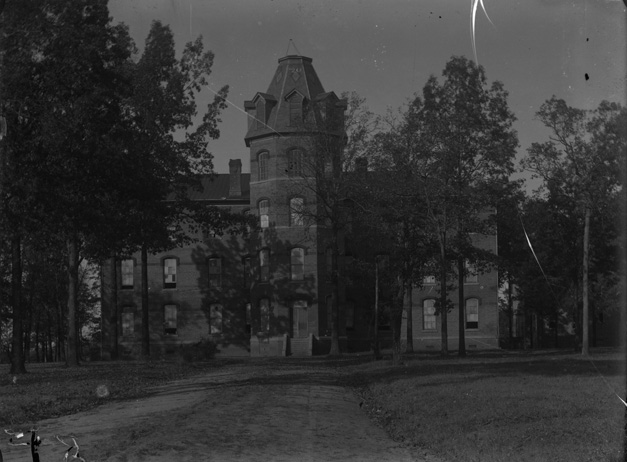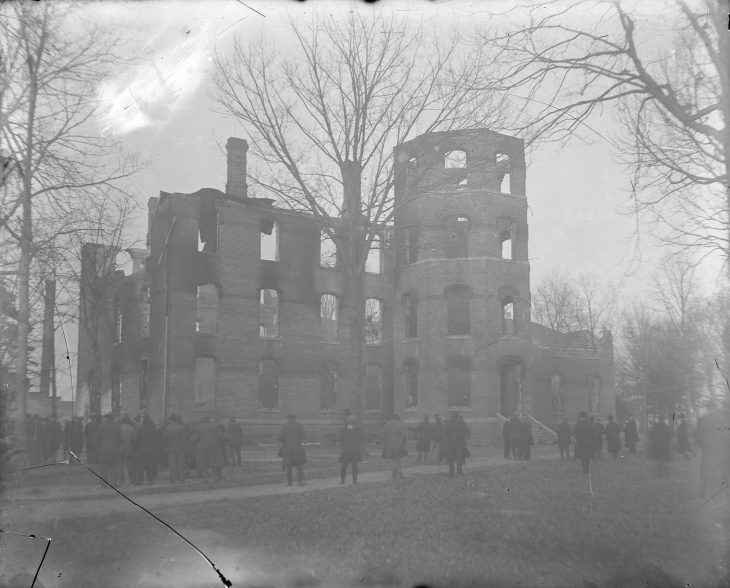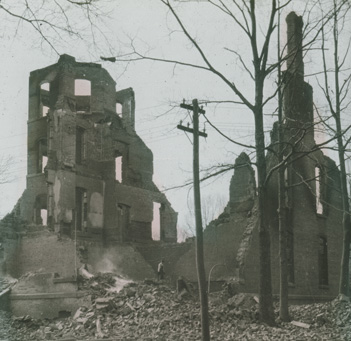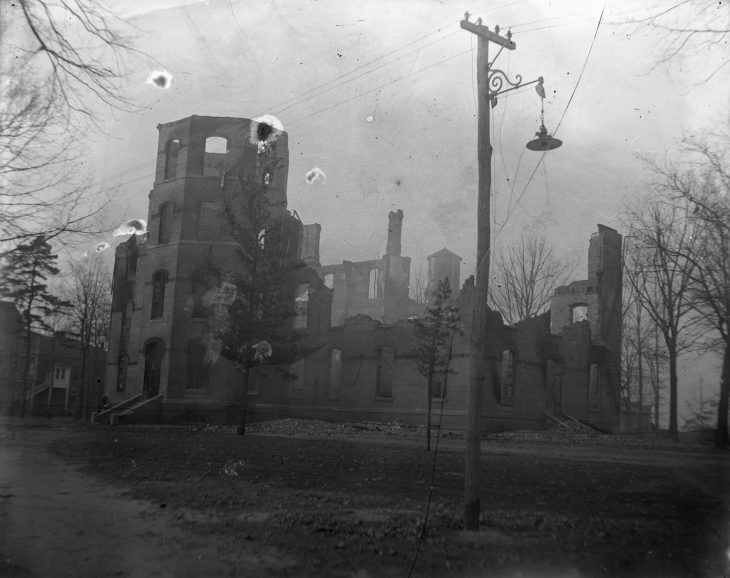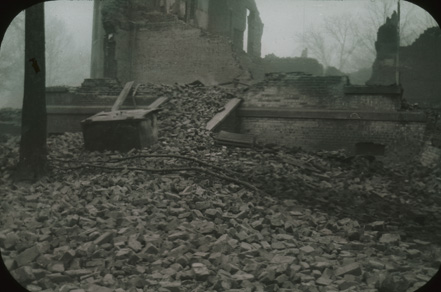In this edition of #ElonTBT, we look back at one of the first defining moments in Elon's history: the fire of 1923 that destroyed the campus centerpiece but sparked a century of excellence.
In the #ElonTBT series, the Elon University News Bureau, along with Archives & Special Collections, will flash back to the past to take a look at Elon over the years. You will find videos, newspaper clippings, photos and more to celebrate Elon’s past, while looking ahead to the future. Follow along on Today at Elon and the university’s Twitter, Facebook and Instagram pages every Thursday to see what we dig up.
Nearly 100 years ago, a devastating fire changed the course of Elon forever.
In 1923 William A. Harper was serving as Elon’s fourth president and the college’s enrollment consisted of only a few dozen students. The strength of the close-knit campus community was never more tested than in the early hours of Jan. 18, 1923.
William B. Terrell, a 24-year-old sophomore and U.S. Army veteran, was completing his shift duties in the campus power plant when he looked out a window toward the Administration Building between 6 and 6:30 a.m. He noticed a light coming from the second floor of the building that housed Elon’s administrative offices, classrooms, library and chapel.
Terrell quickly realized the light was just the beginning of a fire that would soon rip through the building.
He raced to the tower of the building, now commonly referred to as Old Main, to ring its bell and alert the campus, but couldn’t reach the bell’s rope located on the second floor because the tower had already filled with smoke. Instead, he alerted the campus by shouting “Fire! Fire!” outside the men’s and women’s dormitories as he ran back to the power plant to call the Burlington and Gibsonville fire departments.
Firefighters arrived 10 minutes later, and students formed a bucket brigade to provide water to help put out the blaze, but it was soon clear that their efforts were in vain. Flames engulfed the building, destroying student and alumni records, the president’s safe and nearly all the college’s library books. The centerpiece of campus, Old Main had stood since 1890 and was destroyed in what the Jan. 19, 1923, edition of the Maroon and Gold student newspaper called “the greatest catastrophe in the history of Elon College.”
A student reporter detailed the night of the fire in an opinion piece in the paper, writing, “The broken, crumbling walls of the Administration building were to the solemn onlookers symbolic of the rended heart of Elon; but the tall, stately walls of the tower, standing defiantly against the strong wind that was sweeping down upon the scene of devastation, were symbolic of the staunch undying spirit of loyalty and service that permeated the hearts of every friend who knew of Elon’s loss.”

The fire caused an estimated $125,000 to $150,000 in damage.
The Administrative Building fire also sparked a second fire between the tin roof and the ceiling of the nearby Alumni Building. Firefighters were able to contain that fire as Terrell and two other students climbed onto the roof to tear it back and make room for firefighters to reach the hotspot with their hoses. Terrell cut his leg on the roof, which accounted for one of only a few minor injuries sustained in the fire.
The campus community wasted no time putting a plan into action in the fire’s aftermath. At 10 a.m., four hours after the incident, President Harper met with faculty to find ways “to continue the work of the session.”
The next hour, Harper hosted an assembly in the Alumni Building gymnasium for students, faculty and townspeople. Students and faculty spoke, and Harper read encouraging telegrams sent the school following the fire. The group sang “Here’s to Dear Old Elon” and “Praise God from Whom All Blessings Flow” in what was described as a “positive” gathering.
“It was made clear in these addresses that the real Elon is not in the material equipment of the college, but within the heart of every student and friend of the institution,” read the Maroon and Gold opinion article.
By 4 p.m. faculty announced schedules and locations for classes, which resumed just one day after the fire. For the rest of the semester, classes met in the men’s and women’s gyms, dormitories, lodges, the post office, and even in the homes of faculty members. The administrative offices of the president and dean were moved to East Dormitory.
Of course, those were only temporary solutions.
Just days after the fire, the Board of Trustees convened to find a more permanent path forward. Board members voted to rebuild the campus and appointed nine members to the Emergency Fund committee with the goal of raising $600,000 – half for construction and half for the school’s permanent endowment. The board agreed to build “three or more buildings,” the first of which would be a three-story, fireproof administration building.

Following a successful fundraising campaign, trustees voted to call the new building Alamance, in recognition of the $100,000 in donations from residents of Burlington and Alamance County. Col. Robert L. Holt, who led the Emergency Fund campaign in the county, laid Alamance’s first brick on March 21, 1923. The new building was ready for use by September of that same year.
Elon’s resilience through the most difficult time in its early history is what helped shape the Elon University that lives on today. The university’s past and present can best be summed up with a quote from the Maroon and Gold.
“The Administration Building, the landmark of the institution, is gone,” the author wrote. “Elon’s heart is broken. But the glow from the smoldering embers of the ruins stands out as the light that will lead to the construction of a greater temple to the high ideals of mankind.”
Do you have any special pieces of Elon history? Share your photos and videos with us via email at news@elon.edu or using the hashtag #ElonTBT on Twitter, Facebook and Instagram.



